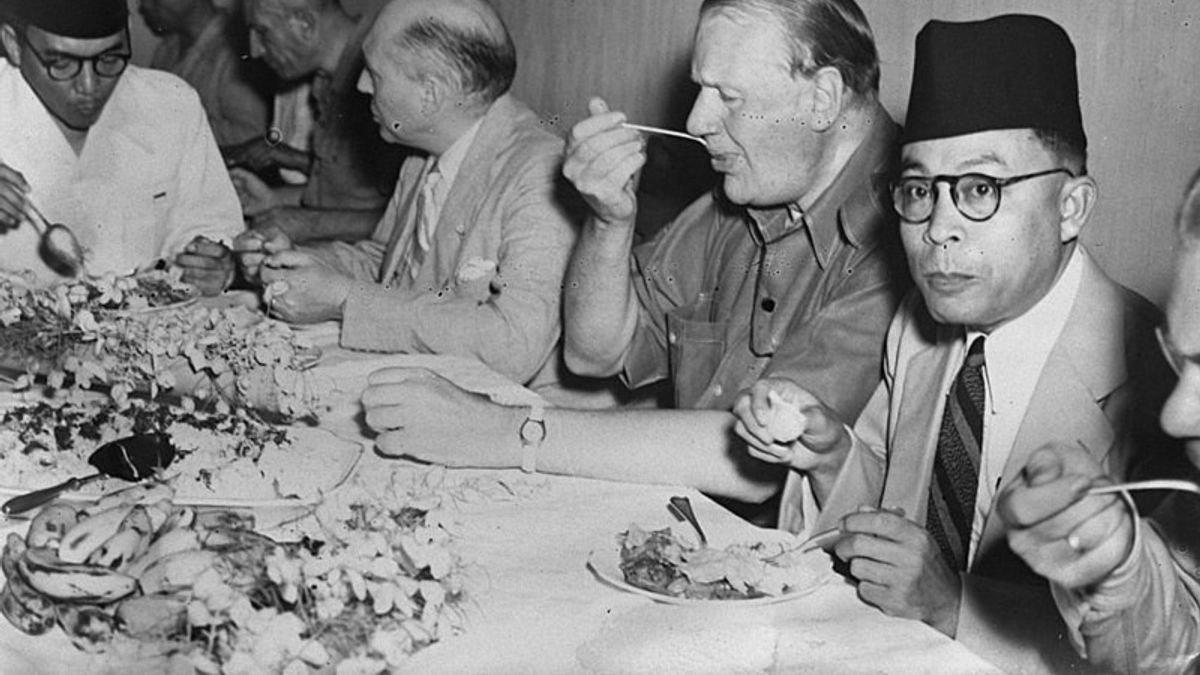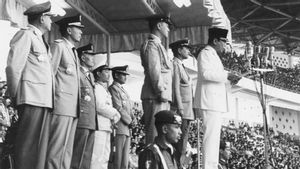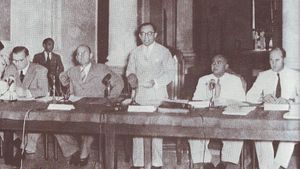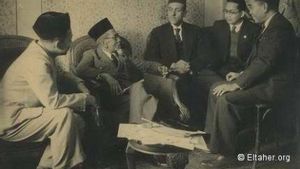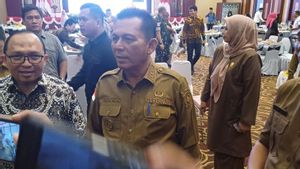JAKARTA - Today's history, 75 years ago, on March 25, 1947, the results of the Linggarjati Agreement were officially signed by Indonesia and the Netherlands at the State Palace, Jakarta. The agreement is proof that Indonesia is able to use diplomacy to maintain independence. As a result, the Netherlands recognized Indonesia's de facto sovereignty over the areas of Java, Madura, and Sumatra. Also, the Linggarjati Agreement became a mouthpiece for Indonesia's existence in the international world. Alias, this event made the world care about Indonesia's struggle.
Indonesia's struggle to maintain independence through diplomacy is not easy. Many challenges and obstacles were faced. The presence of the Netherlands and its allies closed the diplomatic route, for example. However, Indonesia did not give up.
Every effort is made. Even including negotiating with the enemy (the Netherlands). The Linggarjati negotiations, for example. The meeting took place from 11-13 November 1946 in Linggarjati, Kuningan, West Java. Indonesia's mission is clear. Freedom is a fixed price.
At that time, Indonesia was represented by Sutan Sjahrir, AK Gani, Susanto Tirtoprojo, and Mohammad Roem. The Netherlands was represented by Wim Schermerhorn, Max Von Poll, HJ van Mook, and F de Baer. Meanwhile, England as the person in charge or mediator was represented by Lord Killearn.

"The result, among other things, is the approval of the definite determination of the status and sovereignty of the Republic of Indonesia in de facto over the areas of Java, Madura, and Sumatra. Furthermore, the Republic of Indonesia and the Netherlands agreed to form a state with a federal government system called the United States of Indonesia (NIS). They then also agreed to form an Indonesian-Dutch union called the Indonesian-Dutch Union."
"It was also agreed that the NIS to be formed had territory in the former Dutch East Indies and as Sjajrir suggested to replace the word vrije staat (independent state) in the Dutch concept with the word souvereigne staat (sovereign state) in the agreed text of agreement. In fact, the term was initially rejected by the Dutch," said Rushdy Hoesein in the book Terobosan Sukarno dalam Perundingan Linggarjati (2010).
The points of agreement were only inaugurated four months later, which is today's history on March 25, 1947. The new government signed the Linggarjati agreement at the State Palace, Jakarta. The signing was after the points were approved by the Central Indonesian National Committee (KNIP). A body created specifically to assist the president.
As a result, the popularity of the struggle of the Indonesian people began to be noticed by many countries in the world. International support was pouring in. Even though the Netherlands itself in the future did not recognize the Linggarjati Agreement. However, Indonesia did not give up until the Netherlands actually recognized Indonesian sovereignty on December 27, 1949.

"With the ratification of the KNIP, the government can sign the Linggarjati agreement which took place on March 25, 1947, at the State Palace in Jakarta. This agreement covers the following points: First, de facto recognition by the Netherlands of the Republic of Indonesia's power in Java, Madura, and Sumatra. Second, the recognition of RI as one of the countries in the RIS that will be formed. Third, the formation of the Indonesian-Dutch Union which will be headed by the Queen of the Dutch kingdom.”
"As a result of the negotiations, Indonesia was recognized de facto by several countries, such as the United States, Britain, and Australia, while the Arab countries recognized Indonesia de jure on their own initiative. This recognition means the recognition of RI's equipment, namely foreign relations and the armed forces. Even though Linggarjati's agreement was later no longer recognized by the Netherlands, recognition from other countries cannot be revoked," concluded Iin Nur Insaniwati in the book Mohamad Roem: Karier Politik dan Perjuangannya, 1924-1968 (2002).
That was an important event in recognizing the results of the Linggarjati Agreement which became today's history, March 25, 1947.
SEE ALSO:
The English, Chinese, Japanese, Arabic, and French versions are automatically generated by the AI. So there may still be inaccuracies in translating, please always see Indonesian as our main language. (system supported by DigitalSiber.id)
